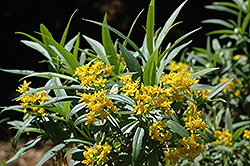Fri & Sat 8am - 8pm
Sun 8am - 7pm
Anytown, USA 12345
fax: 261.787.0463
e-mail: info@successgc.com


Plant Finder

Height: 8 feet
Spread: 8 feet
Sunlight:
![]()
![]()
Hardiness Zone: 8b
Description:
A handsome accent shrub producing volumes of butter yellow flowers from mid-winter to late spring; visually stunning when massed together in the garden
Ornamental Features
Willow Ragwort is bathed in stunning panicles of fragrant buttery yellow star-shaped flowers with gold eyes at the ends of the branches from late winter to late spring. It has bluish-green evergreen foliage. The narrow leaves remain bluish-green throughout the winter.
Landscape Attributes
Willow Ragwort is a multi-stemmed evergreen shrub with a more or less rounded form. Its average texture blends into the landscape, but can be balanced by one or two finer or coarser trees or shrubs for an effective composition.
This is a relatively low maintenance shrub, and should only be pruned after flowering to avoid removing any of the current season's flowers. It has no significant negative characteristics.
Willow Ragwort is recommended for the following landscape applications;
- Mass Planting
- Hedges/Screening
- Naturalizing And Woodland Gardens
Planting & Growing
Willow Ragwort will grow to be about 8 feet tall at maturity, with a spread of 8 feet. It has a low canopy, and is suitable for planting under power lines. It grows at a medium rate, and under ideal conditions can be expected to live for 40 years or more.
This shrub does best in full sun to partial shade. It prefers dry to average moisture levels with very well-drained soil, and will often die in standing water. It is considered to be drought-tolerant, and thus makes an ideal choice for xeriscaping or the moisture-conserving landscape. It is not particular as to soil type or pH. It is somewhat tolerant of urban pollution. This species is native to parts of North America.
